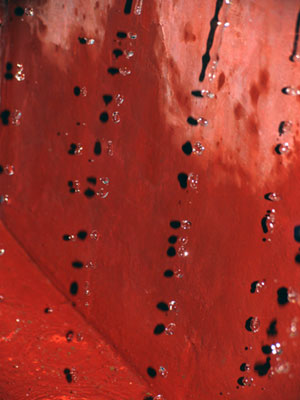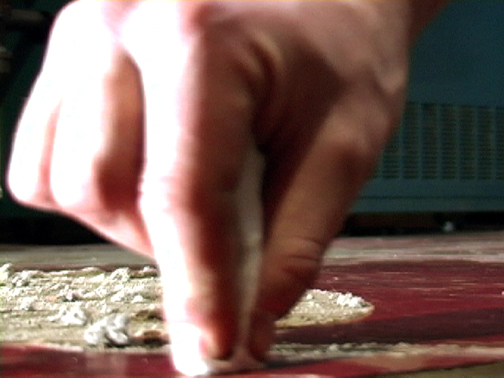Douglas Weathersby @ Kingston Gallery, the Atlanta Contemporary Art Center, and Solomon Projects
http://www.kingstongallery.com/http://www.thecontemporary.org/http://www.solomonprojects.com/Douglas Weathersby’s current exhibitions at three different sites can each be viewed as individual exhibitions, but they can also be viewed as one large, multi-state exhibition. More correctly, all of Weathersby’s work for the past few years can be seen as one large piece that has frequently manifested itself within various exhibition venues, but Weathersby’s larger umbrella piece of artwork continues even when it isn’t being seen in galleries or museums. The cornerstone of Weathersby’s work is his company
Environmental Services (http://www.drwservice.com/). An over simplification of Environmental Services is that it is a company where individuals can hire Weathersby as a cleaning/art making service. Weathersby’s work, just like any company, continues to exist even if it is not currently involved in a job. Subsequently, only looking at individual exhibitions of Weathersby’s work denies the real analysis of what his company (artwork) is actually doing. And what he’s doing is far more complex than any one exhibition can entail.
For example, Weathersby’s installation in the center gallery of Kingston Gallery is called “Bartered Space / My Space” where Weathersby performed cleaning services for the gallery for a month in exchange for an exhibition in the space. His installation in the space is a photographic recreation of his home office for Environmental Services. The one of the more intriguing parts of the exhibition is that on the last day of the exhibition (10/28), Weathersby will shred all of the photographs he used to make the piece. Most artists view themselves solely as creators. The photography industry in particular makes millions of dollars convincing artists that archivability is as valuable as creation. How many artists make work so that it will be destroyed? How many artists understand that destruction is as important as creation? In the modern world, how many artists honor Shiva as well as Brahma and Vishnu? What separates Weathersby’s work is that it displays a wholly different philosophy and value system from what is mass marketed today.
Weathersby’s video piece at the Atlanta Contemporary Art Center is part of a group show called “Louis Morris” that ostensibly is organized in response to Morris Lewis’ survey at the High Museum. However, while Weathersby’s work can be seen as a legacy of abstract painting (Weathersby does have his MFA in painting from Mass Art), his work is primarily concerned with the process of creating which frequently leads to abstraction rather than traditional abstract questions of composition, color, etc. In his video, Weathersby creates abstract images while cleaning cars. So his process is one where he takes dirt, moves it into abstract shapes and then washes it away. Weathersby’s work is form of contemporary Mandala making.
Watch Mandala sweepingWeathersby’s work at Solomon Projects in Atlanta is a display of five photographs that he took during one of Environmental Services jobs. On the surface, the images are aesthetically compelling abstractions and they can be discussed in those terms. However, by displaying straight photographs, Weathersby also opens up a new dialog in his work that deals with freezing time. Weathersby’s photographs articulate a very specific, hyper-focused mental state that occurs when creating work during his Environmental Services duties. Athletes call it “the zone”. Tibetan Buddhist monks call it the “clear-light mind” that can be found in deep mediation. Artists don’t have a word for it, but they all know what it is.
Weatherby’s work is developing a visual philosophy, but the extent of the philosophy is difficult to see when only viewing one piece of the whole body of work. The totality of his work embodies too many complexities to list here. The relationship between art and commerce, creation/sustaining/destroying in the modern world, enriching perception, performance as installation, etc. However, seen in smaller, bite sized exhibitions, the work is more digestible. So, you should definitely go see Weathersby’s work in as many venues as possible. To start, watch him destroy his work at Kingston at the closing of the show.

Weathersby in his installation at Kingston Gallery

Douglas Weathersby
JCAL Project, Urinal, 2005
Chromogenic print
24 x 18 inches
Solomon Projects

Video still of Weathersby working on dust outline

A monk begins to destroy the mandala










